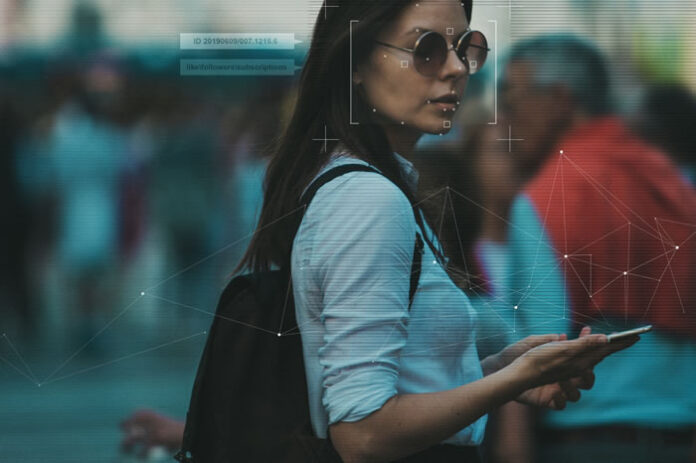Population displacement is one of the leading policy issues of the 21st century. At least 79.5 million people around the world have been forced to flee their homes. Globally, the number of asylum applications from separated or unaccompanied children is now reaching record highs. Women and girls are around 50 percent of any refugee, internally displaced or stateless population. The worst rates of preventable mortality and morbidity in women and children occur in humanitarian and crises. Common challenges for displaced women and children include access to healthcare, physical abuse, discrimination, sexual violence, and human trafficking.
Technology to Help
Technologies can help displaced women and children in multiple ways including: digital classrooms and digital storytelling; electronic health records; electronic voucher cash cards; geographical information systems; low cost computers; portable medical devices that enable physicians to run tests including eye examinations, tests for tuberculosis, and the identification of biomarkers for HIV positive patients; social media; SMS text messaging; health surveillance systems; 3D printing such as low-cost digitally fabricated prosthetics and fabrication laboratories equipped with laser cutters, vinyl cutters, milling machines, cloud-based electronic health records can successfully recover health records in case of disasters; and voice enabled technology.
All of these are being deployed in humanitarian settings today. Below are five powerful technologies that are being used to improve the lives of displaced women and children.
1. Mobile Technology
Mobile technology is a critical enabler for displaced people. During the European refugee crisis in 2015, thousands of refugees used their mobile phones to navigate their way across the continent. Many see mobiles as a necessity, sometimes prioritizing phones over food or shelter. Without mobile phones and internet access, refugees cannot locate themselves or their families. Text messaging can provide early warning alerts and local assistance numbers. Data entry using mobile devices facilitates the registration of displaced individuals, to identify those in need of assistance, and to capture data on issues such as food security, vaccination rates, and mortality. Mobile voice technology is growing and can overcome language and cultural barriers. Mobiles devices can also be used to deliver translated training for healthcare providers during crises and can increase communication and education of healthcare providers on cultural beliefs of refugee populations. Digital storytelling can provide children with a sense of social inclusion and community interaction to promote mental health, well-being, and healthy child development.
2. Digital Identity
Seventy percent of Syrian refugees lacked basic identification documents. Without identity, displaced women and children risk falling through the cracks, becoming vulnerable to trafficking or stateless. Blockchain can help reduce human trafficking by giving paperless identification documents based on biometric data, such as fingerprints or facial scans. For example, Moldova has the highest rate of human trafficking in the world and every year, hundreds of women and girls are trafficked from Moldova to Russia, Turkey, the United Arab Emirates and elsewhere, as sex slaves. Moldova is working with Consensys and the UN to stamp out human trafficking. Children attempting to cross the border have their iris scanned to alert their guardians, two of whom would have to approve their leaving the country. This approval is recorded on the blockchain, which cannot be removed by bribing officials, reducing instances of corruption as well as trafficking. This approach can apply to other humanitarian settings.
Blockchain has also been used for identity in Syria, Jordan and Pakistan in the WFP’s Building Blocks program, and the IFRC’s 2018 digital identity and cash transfer programme in Kenya. In the WFP’s Building Blocks program, an identity was entered into a database and verified using biometric iris scans. ID2020 is using iRespond in a pilot-project in the Mae La Refugee camp in Thailand, where 40,000 people live, and has identified and registered communities in Kenya, Senegal, Sierra Leone and Myanmar for HIV testing and treatment , linking medical records automatically, with no ID cards or personal identifiers, improving the tracking and treatment of HIV positive people.
3. Mobile Payments
International humanitarian assistance agencies are under increasing pressure to account for aid dollars with the largest funding short-fall of US$10.3 billion (41% of requirements) in 2017. In 2004 it was estimated cash transfers only represented 1% of humanitarian aid. This figure rose to 6% by the end of 2015 and to 40% by the end of 2017. Mobile money is, on average, more than 50% cheaper than traditional methods and 21% cheaper when mobile money cash-out fees are considered, it is particularly competitive for low-value transactions. GSMA found that the average cost of sending USD 200 using mobile money was 2.7%, compared to 6% using global money transfer operators in 2016.
4. Crisis Mapping, GIS and Remote Monitoring:
Satellite imagery, social media, and radio frequency identification do not require strong ground presence for data collection and can provide near real-time updates on changing conditions. Social media posts are often geocoded, which provides valuable local detail as well. Crisis mappers can layer social media generated data with satellite imagery to evaluate road conditions in crisis areas, providing up-to-the-minute maps. Drones can map displaced populations and provide real-time visuals on infrastructure damage.
Geographical information systems (GIS) have been a major game changer and now underpin risk assessments, vulnerability models, and spatial decision support systems that predict outbreak and spread of diseases. Examples include disease surveillance systems that assess disease risk during natural disasters, and emergency preparedness of households with specific health needs. These systems have been found to enable continuity of care throughout a disaster, especially for displaced women and children.
GIS are used to show areas of conflict through the creation of live crisis maps that document the intensity of conflict and identify the number of people in need of assistance. They are used for demand-based responsive supply for displaced populations and to create warnings. GIS can also be used to track population movements, to identify those in high-risk zones in cases of disease outbreaks, and to send text messages containing health information that can be sent to those proximal to an outbreak area. Technologies that combine GIS and social media have made it possible for humanitarian organizations to aggregate posts and broadcast information to public officials or to rescue and relief organizations.
5. Supply Chain
Logistics efforts account for 80 per cent of disaster relief. Supply chain visibility and data tracing can often be poor and transparency can improve humanitarian operations by providing data to inform more effective and accurate decisions, enabling evidence-based interventions and management, and increased accountability. Blockchain is being used to improve transparency in humanitarian supply chains and can be used as a data platform that traces the origins, use and destination of humanitarian supplies. As a shared, secure record of exchange, blockchains can track what went into a product and who handled it along the way, breaking supply chain data out of silos, and revealing the provenance of a product from originator to end user.
Some technologies are at an early stage and there can be risks. For example, if mobile phone ownership is concentrated in certain areas, SMS-based surveys may not be representative of populations in need. Some technologies require smart phones, stable electricity, or wireless networks. The cost of technology can vary widely, and some has not been proven at scale. Issues of privacy and security need attention, as people in humanitarian settings fear having their personal information leaked or their location identified, or being tracked. Care should be taken to ensure that all data is de-identified and no personal information is collected without consent.
Displaced Women and Children
The widespread penetration of mobile technology has been of tremendous significance to displaced women and children. When linked with identity and payments, it has facilitated access to services and the economic system and gives protection against trafficking. The use of blockchain in humanitarian supply chains is improving transparency and traceability which ultimately should reduce fraud and increase efficiency. Technology is a powerful adjunct to the extraordinary efforts of the humanitarian sector to bring help to the world’s most vulnerable.















